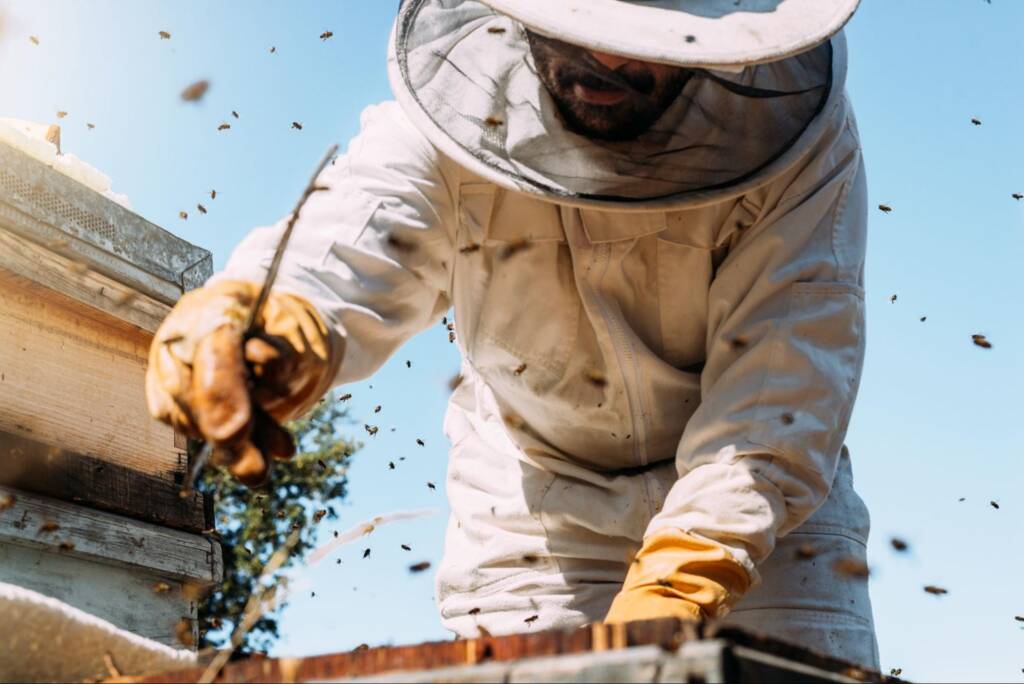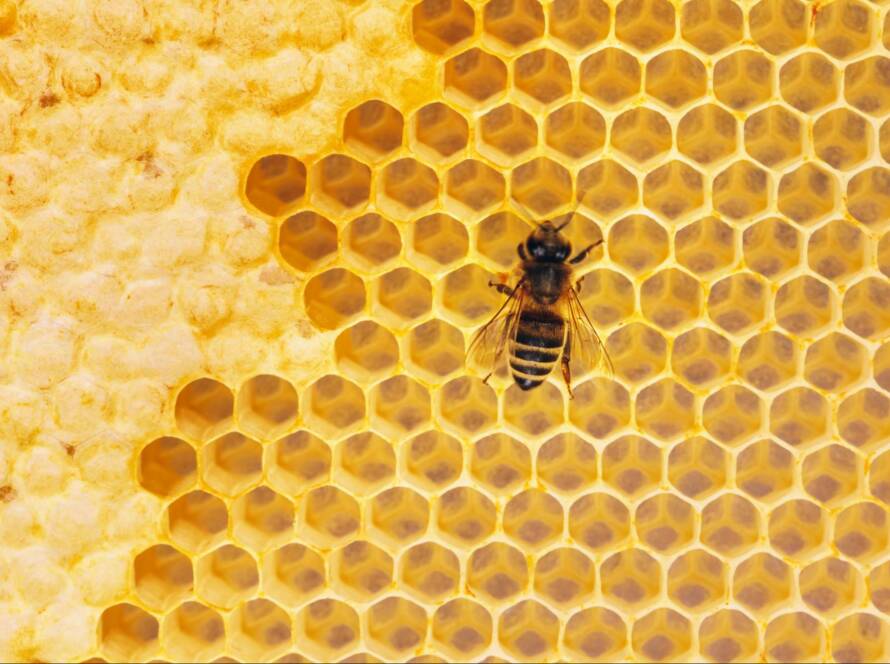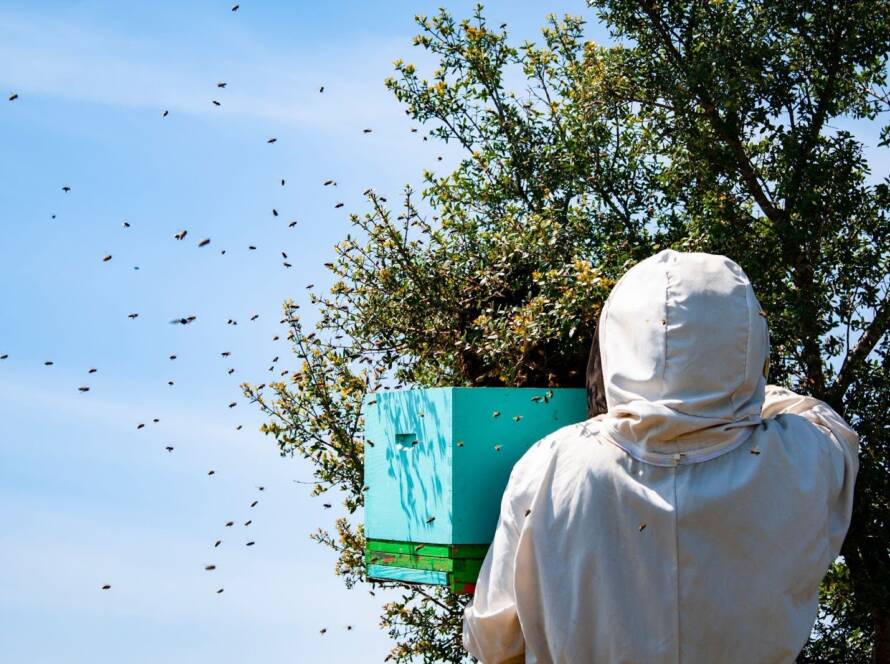Most homeowners never expect to deal with a swarm of bees. But when it happens, the panic is real and immediate. The sight of bees buzzing near your attic, walls, or trees can be unsettling. DIY solutions often fail or make things worse. That’s why knowing how much bee removal costs matters before deciding.
What Affects Bee Removal Cost?
Bee removal pricing isn’t a flat-rate service. Several real-world details influence how much you’ll pay. Understanding those variables helps you avoid surprise charges later and choose the right service for your budget:
Type of Bee Infestation Impacts Cost
Different bees mean different removal strategies. Honey bees are often relocated, while wasps may be exterminated. Carpenter bees burrow into wood, requiring a separate approach. Identifying the species is the first step to pricing. Misidentifying them could raise costs later due to repeat services.
Hive Location Changes the Bee Removal Cost
Where the hive is located changes everything. Outdoor hives in trees or sheds are easier to access. Inside walls, chimneys, or roofs means more labor, more tools, and higher costs. Hard-to-reach spots may also require cutting through structures. The tougher the access, the steeper the bill.
Infestation Size Influences the Removal Price
A small swarm usually costs less than a whole colony. More bees often mean more damage, more time, and more resources. Larger infestations may also need multiple visits. Some hives can hold thousands of bees, which makes the job harder. Bigger problems always push the final cost higher.
Cleanup and Structural Repairs Add to Cost
Removal is just the start of the bees living inside walls or ceilings. Professionals may need to clean honey residue, dead bees, or nesting debris. That’s especially true with long-term infestations. If there’s damage to insulation, drywall, or wiring, expect extra charges. Those costs can match or exceed the removal itself.
Average Bee Removal Cost by Type
Not all bee species are treated the same. The kind of bee involved changes the method and cost. From honey bees to hornets, each brings its risks, which is why their removal prices vary so widely.
Honey Bee Removal Cost Averages and Factors
Honeybees are protected in many areas and are usually removed and relocated alive. Depending on location and size, costs range from $150 to $1,000. The price may include transportation and hive setup elsewhere. It’s more than just removal—it’s ethical relocation.
Carpenter Bee Removal Cost and Treatment Frequency
Carpenter bees drill into wood, making structural damage likely. Removing them often requires sealing entry points and using deterrents. One-time removals cost between $100 and $400. But if they return, you’ll need repeat treatments. Long-term plans or warranties can add to your total cost.
Wasp and Hornet Removal Cost Differences
Wasps and hornets aren’t bees, but many people confuse them. Their nests are often aggressive and dangerous to approach. Removal can cost between $100 and $500, depending on the nest’s size and placement. Some require protective gear or chemical treatments. Unlike honey bees, these are usually exterminated, not relocated.
Bee Removal Cost Based on Service Type
The way bees are removed has a significant impact on price. Some methods are humane; others are fast but harsh. Service timing and urgency can also shift the cost. It’s not just what you remove but how and when.

Live Bee Removal vs. Extermination Costs
Live bee removal is often preferred for environmental reasons. It usually costs more because it’s slower and more specialized. Extermination is faster but risks harming beneficial species. Ethical removals may require special licenses and equipment. If you care about sustainability, expect to pay a bit more.
Emergency Bee Removal Costs After Hours
Bees don’t always wait for business hours. You might need emergency service if a swarm shows up on a weekend or evening. This emergency often adds $100 to $300 to your bill. The fast response comes at a premium, especially in peak seasons. Still, it can be worth it for safety and peace of mind.
Comparing DIY Bee Removal vs. Professional Help
Doing it yourself might seem cheaper at first glance, but it comes with risks—stings, damage, and possible fines. Most DIY attempts fail, especially with hidden hives. Professional pest control services have the right tools and know the local laws. In most cases, hiring helps save time and money in the long term.
Additional Bee Removal Costs You Should Expect
The removal itself isn’t always the only cost. Some situations require extra services after the bees are gone. These can include cleaning, repairs, or prevention steps. The following are the extras you need to prepare for:
Structural Repairs Increase Total Bee Removal Cost
Bees in walls or roofs may forcefully cut into those areas. After removal, that leaves holes or gaps to fix. Drywall repairs, roof patching, or insulation work all add costs. Expect to pay another $200 to $2,000, depending on the damage. Always ask if your quote includes repair work.
Pest Prevention Services and Bee-Proofing
Once bees are gone, you’ll want to keep them out. That means sealing entry points and applying deterrents. Some companies offer complete sealing services for $100 to $500. Long-term bee-proofing helps avoid repeat infestations. It’s a wise add-on if the bees were inside your home.
Inspection and Follow-Up Visit Charges
Some removal jobs require a second visit. That may be to check for new activity or to clean up stragglers. Not all companies include this in their base rate. Follow-up visits may cost $50 to $150 each. Be sure to clarify if one is needed after the job.
How to Find a Reliable Bee Removal Service
Not every bee removal company operates the same way. Quality, transparency, and ethics vary from one provider to another. Hiring the wrong team can be expensive and risky. A bit of research upfront saves time and money later.
Why Licensing and Insurance Matter for Bee Removal
Always check if the company is licensed for pest control. Insurance matters, too, especially if they damage your property. If someone gets hurt, you don’t want to be liable. Reputable pros should be upfront with their credentials. It’s a red flag if they dodge the question.

Choose Services That Use Humane Bee Practices
If you’re dealing with honey bees, humane options are best. Relocation supports the environment and avoids harm. Some states even require it by law. Ethical services may work with local beekeepers. Ask how they handle the bees before booking the job.
Get Clear, Written Pricing for Bee Removal
Verbal quotes leave room for surprise charges later. A good company will offer detailed, written pricing. That includes labor, equipment, and possible follow-ups. Ask for line-item breakdowns and confirm what’s included. Transparency shows professionalism and builds trust.
Bee Removal Cost Compared by Region
Where you live has a bigger effect on cost than most expect. Bee activity, service availability, and local laws can shift pricing. Urban and rural areas face different challenges. Knowing regional trends helps you spot fair pricing.
Urban vs. Rural Bee Removal Price Gaps
Cities often have higher labor and service fees. There’s also more demand, which drives prices up. In rural areas, you may have fewer options. That could mean either higher or lower rates, depending on competition. Local laws may also affect who can legally remove bees.
Seasonal Changes in Bee Removal Pricing
Spring and summer are peak seasons for bee activity. That’s when removals cost the most. In colder months, you get a better rate. However, some infestations are more challenging to remove in winter. If you spot bees early, act before peak season hits.
How to Budget for Bee Removal Services
A good removal plan includes a solid budget. Costs can pile up fast if you don’t ask the right questions. Planning lets you avoid surprise fees; understanding the numbers will make you feel more in control.
Why You Should Get Multiple Bee Removal Quotes
Always get at least two or three quotes. Prices can vary wildly between companies. Some may offer extras like repairs or follow-ups. Comparing helps you find the best value, not just the lowest price. It also gives you leverage when negotiating.
Ask What’s Included in the Bee Removal Quote
Some quotes only cover removal, not cleanup or repairs. Others bundle in services you may not need. Ask questions until you understand every line item. Don’t assume—it can cost you later. A good provider will explain it clearly without pressure.
Bee Removal Payment Plans or Financing Options
Larger jobs can cost thousands. Some companies offer payment plans to make them manageable. Ask if financing is available before booking. It’s beneficial for major structural repairs. Just make sure there are no hidden fees or interest traps.
Stop Letting Bee Removal Cost Catch You Off Guard
Bee problems don’t stay small. They grow quietly until they demand your attention—and your wallet. Acting early means spending less, stressing less, and avoiding damage that’s harder to fix. Don’t wait for buzzing walls or honey-soaked ceilings to force your hand. Reach out, get real quotes, and handle the issue on your terms while it’s still manageable.
Your home deserves peace from pests. Explore the Thrash Pest Control blog for smart tips, trusted solutions, and local know-how.



